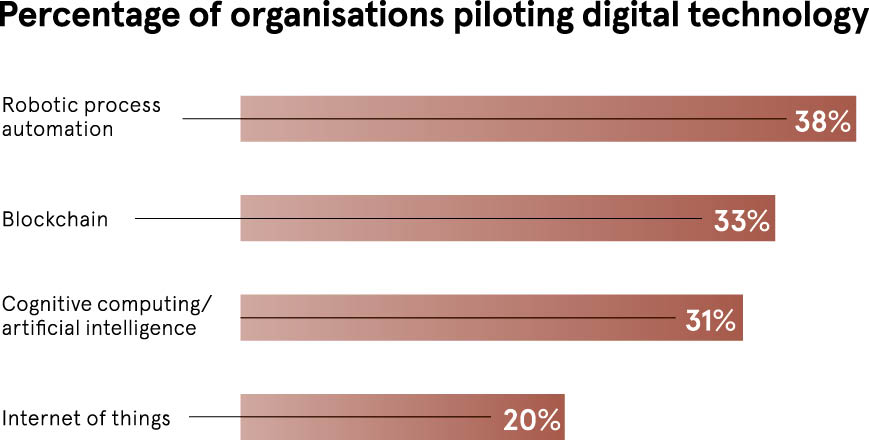Only a few decades ago, procurement was characterised primarily to be a tactical team focused on cost reduction. Now procurement leaders are increasingly expected to play a more strategic role within the enterprise, working closely with the C-suite as a trusted adviser to the business.
Given this shift in procurement’s remit, chief procurement officers (CPOs) are seeking increased visibility into, and control over, spend and greater agility to be able to meet the rapidly changing requirements of enterprises. They want to ensure that the huge swathes of data they generate are under their control and can be analysed for key insights to enable timely and effective decision-making.
“Procurement teams at market-leading enterprises are turning to new technology to make fundamental shifts in the way they work,” explains Paul Blake, associate director of product marketing at GEP, a leading global provider of procurement software and procurement services. But he warns that many businesses are “still locked into the same technology framework that was set up decades ago”.
Indeed, hindered by legacy systems, CPOs often don’t get the levels of visibility, efficiency and integration they want. A large proportion of procurement activities continue to be managed manually, even within large corporations. Microsoft Excel spreadsheets remain in common use among procurement professionals worldwide, so there is a high degree of manual and time-consuming processes.

“If we are talking about transformation and next-level productivity, it’s not possible to achieve it working in the same kind of technology environment that we have today,” notes Mr Blake. “So digital procurement transformation has to be about changing the processes, changing how people work, but you have to do that by removing the roadblocks that current technology presents.”
Research suggests this notion is not lost on procurement professionals, with 95 per cent of procurement leaders surveyed recently by The Hackett Group believing that digital transformation will fundamentally change the way procurement functions within the next two to three years. The adoption of emerging technologies, such as big data, artificial intelligence, robotic process automation and blockchain, is expected to increase, the study reveals.
Bill Harris, director of indirect procurement strategy at Honda North America, concurs: “At Honda, procurement is a very strategic function. And technology has always been critical for our success; we have made substantial efforts to structure our data for stratification to keep pace with our business needs. It’s a core element of our overall digital transformation programme.”
While there seems to be universal agreement on the potential game-changing impact of digital procurement transformation, less than half of CPOs surveyed believe they have the resources and technology infrastructure to move ahead.
Digital procurement transformation requires best-in-class technology that is unified from source to pay, to leverage efficiencies, insights and value from a common process, user experience, and data set
“Digital procurement transformation requires best-in-class technology that is unified from source-to-pay, to leverage efficiencies, insights and value from a common process, user experience, and data set,” explains Jamie Ogilvie-Smals, vice president of consulting at GEP.
“Using separate tools or common ‘platforms’ that are not unified just builds inefficiency into processes, limits the value of the data and does not provide the insights that high-performing teams need to succeed,” he says.
GEP’s focus in recent years has been on developing a cloud-native, unified source-to-pay software platform, SMART by GEP®, that provides users, both within and outside procurement, a comprehensive digital workplace to transform their end-to-end sourcing, procurement and spend management operations. By unifying all the tasks of source-to-pay into a single workspace, SMART by GEP eliminates duplication, maximises visibility and control, and optimises results.
Among the dozens of market-leading organisations that have turned to GEP’s source-to-pay software as part of their digital transformation strategy is a large multinational consumer packaged goods company with $9 billion in spend across more than 40 countries. The company has been able to drive nearly $800 million in savings by bringing more than 80 per cent of its spend under management and achieving 95 per cent process compliance.
Another GEP client, a UK-based global diversified engineering company, achieved more than 98 per cent visibility into $1 billion of spend by consolidating data from 20 different systems, across five divisions and 25 countries, enabling the procurement team to identify significant opportunities to create more value for the business.
“Clearly, there’s a strong case for digital procurement transformation and it’s no longer just a good thing to do in the future, it’s something you must do today. And enterprises should prioritise procurement on their digital transformation roadmap, given the impact it can have on the overall business performance,” says Mr Blake.
By prioritising this increasingly strategic function on their overall digital transformation agenda, enterprises can ensure they are able to maximise the return on investment of digital transformation.
For more information please visit www.smartbygep.com or www.gep.com
